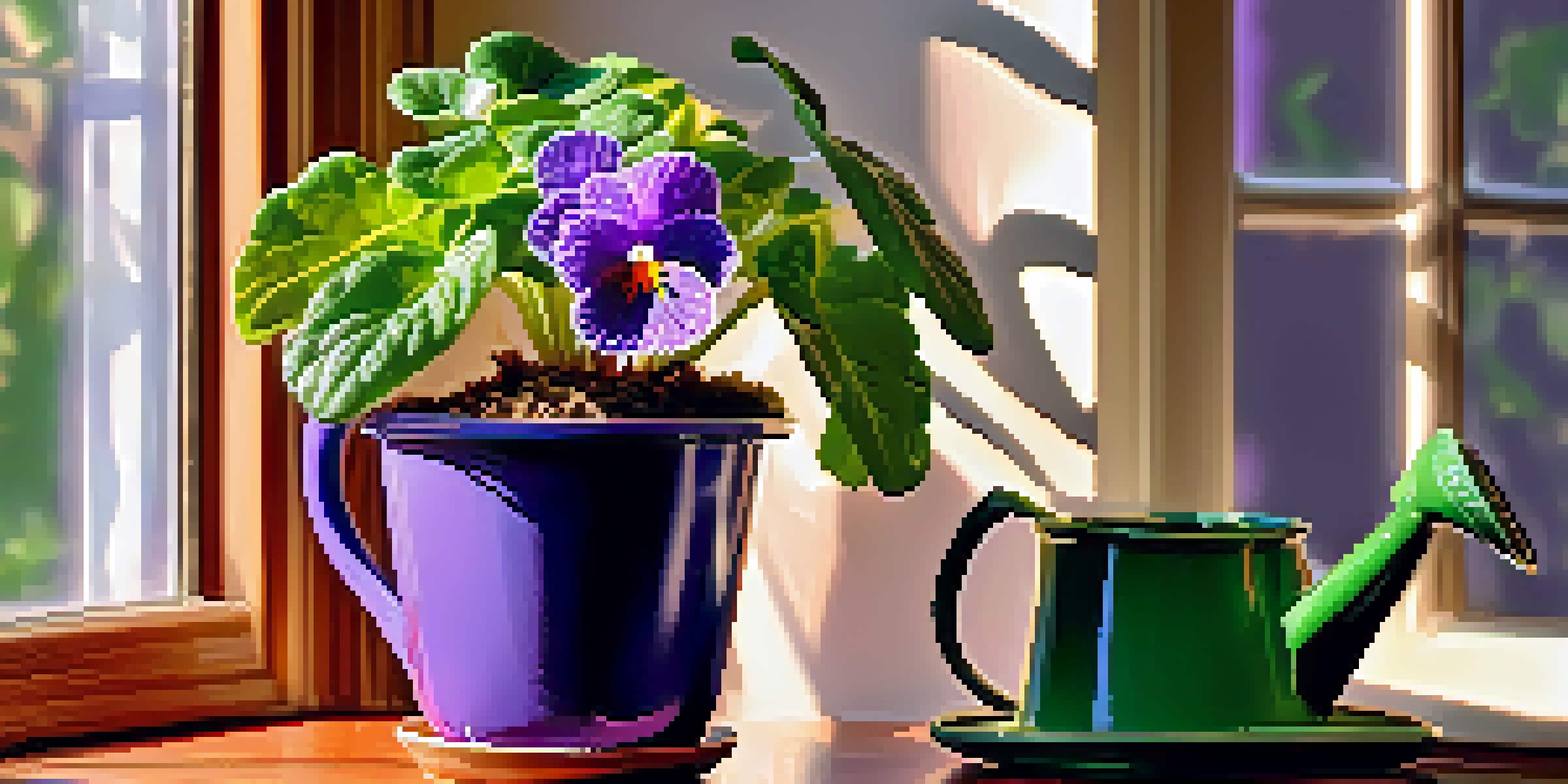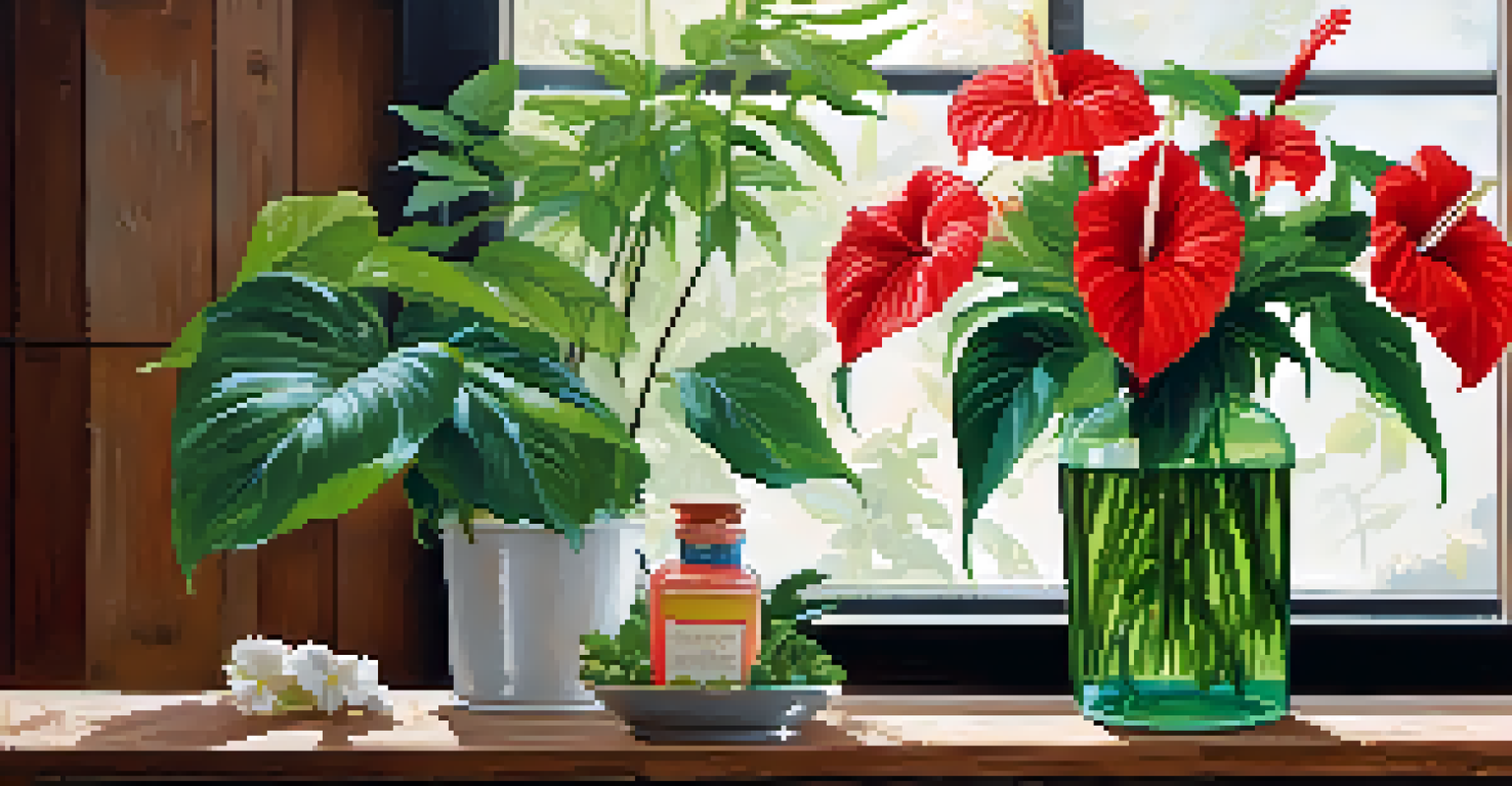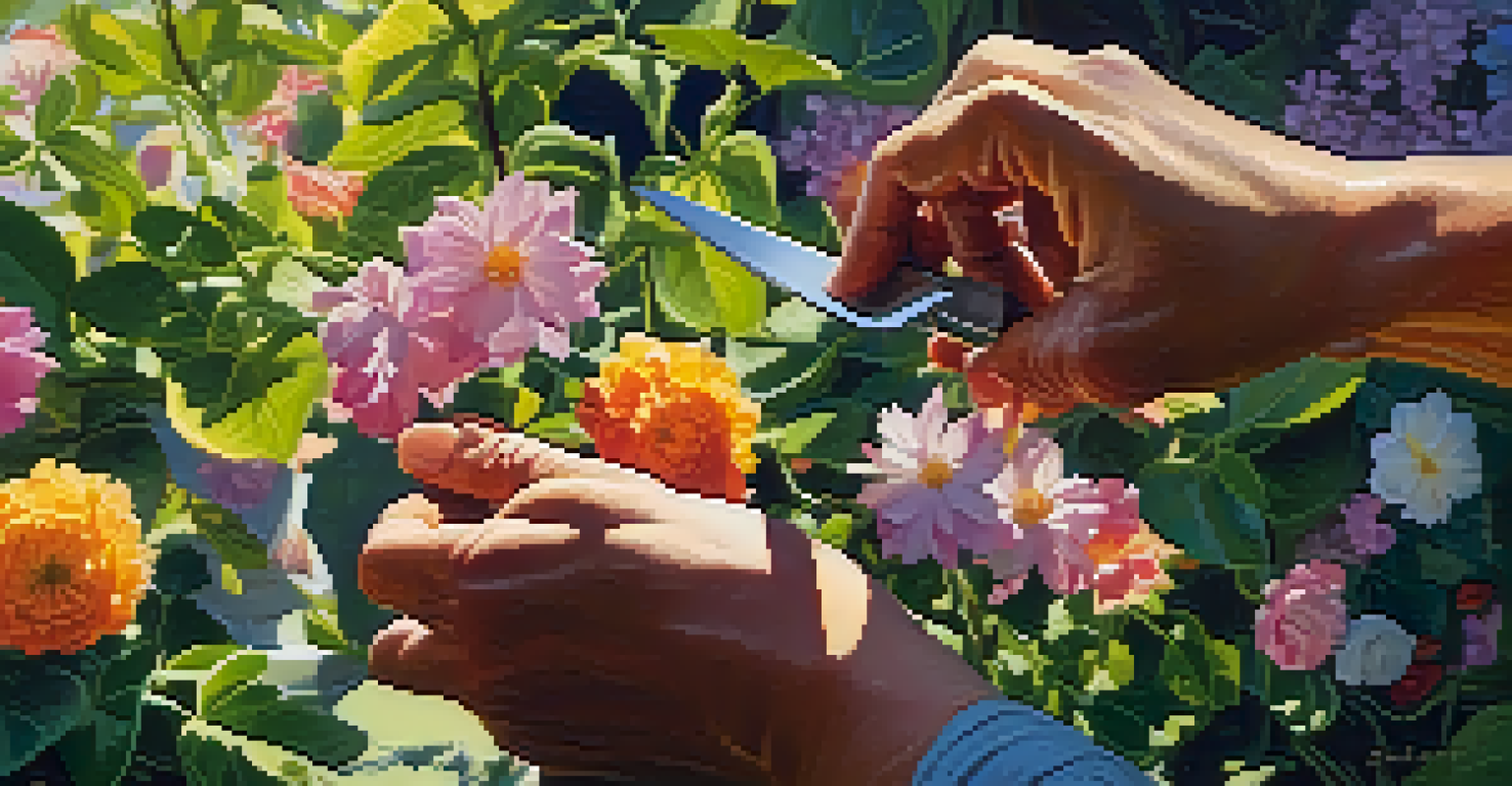How to Properly Care for Your Flowering Houseplants

Understanding the Light Needs of Flowering Houseplants
Light is a crucial factor in the health of your flowering houseplants. Different plants have varying light requirements, with some thriving in bright, direct sunlight and others preferring indirect light. For instance, a vibrant African violet loves a bright spot but shielded from harsh rays, while a peace lily flourishes in lower light conditions.
Plants are like people; they thrive when they are given the right conditions to grow.
To determine the right light for your plants, observe their growth patterns. If they’re stretching towards the light or their leaves are yellowing, it might be a sign they need more or less light. A simple solution is to rotate your plants regularly to ensure even light exposure.
Consider investing in a light meter or using a smartphone app to measure light levels in your home. This can help you place your plants in the best spots, ensuring they get just the right amount of sunshine to bloom beautifully.
Choosing the Right Soil for Flowering Plants
The right soil can make all the difference in the health of your flowering houseplants. A well-draining mix is essential to prevent root rot while providing the necessary nutrients for growth. Look for potting mixes specifically formulated for flowering plants, as these often contain organic matter and perlite for aeration.

When repotting, consider the size of the pot and the roots. A pot that’s too small can restrict growth, while one that’s too large can lead to excess moisture retention. Aim for a pot that gives the roots enough space to expand without overwhelming them.
Light is Key for Plant Health
Different flowering houseplants require specific light conditions to thrive, making it essential to observe their growth patterns for optimal placement.
You might also want to incorporate organic fertilizers into your soil mix. This can provide a slow release of essential nutrients, promoting vibrant blooms throughout the growing season.
Watering Techniques for Flowering Houseplants
Proper watering is one of the most vital aspects of caring for flowering houseplants. Overwatering can lead to root rot, while underwatering can cause wilting and stress. A good rule of thumb is to check the top inch of soil—if it feels dry, it’s time to water.
The love for gardening is a seed once sown that never dies.
Different plants have different watering needs, so it's essential to familiarize yourself with each type. For example, succulents and cacti require less frequent watering compared to tropical flowering plants like hibiscus, which thrive on consistent moisture.
Consider using room temperature water to avoid shocking the plant. Additionally, watering in the morning allows excess moisture to evaporate throughout the day, reducing the risk of fungal diseases.
Monitoring Temperature and Humidity Levels
Temperature and humidity play a significant role in the health of your flowering houseplants. Most houseplants thrive in temperatures between 65°F and 75°F, so it’s important to keep them away from drafts or extreme heat sources. A consistent environment helps prevent stress and promotes blooming.
Humidity is another critical factor, especially for tropical plants that crave moisture. If your home is dry, consider using a humidifier or placing a tray of water with pebbles near your plants to increase local humidity levels.
Proper Soil Supports Growth
Using a well-draining potting mix tailored for flowering plants ensures healthy root development and nutrient access, crucial for vibrant blooms.
Another simple trick is to mist your plants occasionally, but be sure to do this in the morning so that excess moisture can evaporate by evening. This mimics the natural humidity conditions many flowering plants love.
Fertilizing Flowering Houseplants for Optimal Growth
Fertilizing your flowering houseplants is key to ensuring they have the nutrients needed for healthy blooms. Look for a balanced fertilizer that contains equal parts nitrogen, phosphorus, and potassium, which supports both foliage and flower growth. Typically, fertilizing every 4-6 weeks during the growing season is a good practice.
Be sure to follow the product instructions carefully, as over-fertilizing can burn the roots and hinder growth. You can also switch to a fertilizer higher in phosphorus when your plants are in bloom to encourage more flowers.
If you're growing your plants organically, consider using compost tea or fish emulsion as alternatives. These natural fertilizers can provide essential nutrients without the risk of chemical build-up.
Pest Control and Disease Prevention Strategies
Pests and diseases can be a significant threat to your flowering houseplants, but early detection is key to effective management. Regularly inspect your plants for signs of trouble, such as discolored leaves or webbing, which could indicate spider mites or aphids. Catching these pests early can prevent widespread damage.
Natural remedies can often be very effective in controlling pests. For example, a mixture of water and dish soap can be sprayed on affected areas to suffocate insects. Additionally, introducing beneficial insects, like ladybugs, can help keep pest populations in check.
Watering and Humidity Matter
Understanding the unique watering needs and humidity preferences of your flowering plants helps prevent stress and promotes optimal growth.
Preventative measures, such as maintaining good air circulation and ensuring proper watering practices, can help reduce the likelihood of diseases. Remember, a healthy plant is less prone to pests and infections.
Pruning and Deadheading for Healthy Blooms
Pruning and deadheading are essential practices for maintaining the health and appearance of your flowering houseplants. Deadheading involves removing spent flowers to encourage new blooms and prevent the plant from diverting energy into seed production. This simple act can lead to a more vibrant display.
Regular pruning helps shape your plant and remove any unhealthy or overgrown stems. This not only enhances the plant's appearance but also improves air circulation, reducing the risk of disease. Use clean, sharp scissors to make clean cuts for the best results.

Timing is everything when it comes to pruning. It's best to do this during the plant's active growth period, typically in spring or summer, as this encourages faster recovery and new growth.